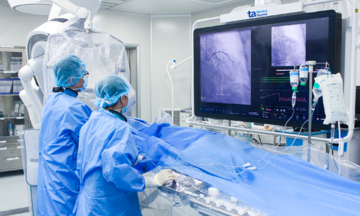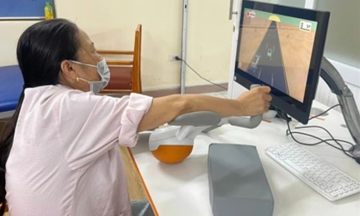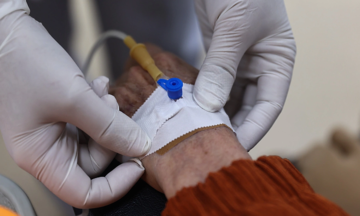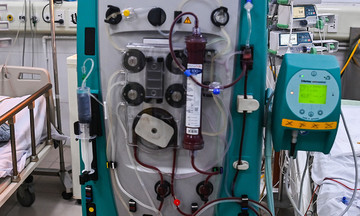Sadiqullah, awakened by a roar that sounded like an approaching storm, rescued three of his children. As he returned for the others, the roof collapsed.
"I was half-buried and couldn't get out," he told the Associated Press at Nangarhar Regional Hospital. "My wife and two sons died, and my father is injured and here. We were trapped for 3 to 4 hours until people from other areas came and pulled us out."
Sadiqullah, from Maza Dara in Nurgal district, one of the areas hardest hit by the 6.0 magnitude earthquake that struck at 11:47 pm on Tuesday in Kunar province, said it felt like the whole mountain was shaking.
A Taliban spokesperson told Al Jazeera that the earthquake killed at least 800 people and injured more than 3,000. Officials warned the toll could rise as rescue teams reach remote mountain villages.
According to the United States Geological Survey (USGS), the earthquake's epicenter was only 8 km deep and 27 km east of Jalalabad in Nangarhar province. Tremors were felt in Kabul, northern Pakistan including Islamabad, Punjab, and Khyber Pakhtunkhwa, and as far away as India, causing panic as people rushed outdoors. About 20 minutes after the initial quake, a 4.5 magnitude aftershock hit the same area, followed by another measuring 5.2.
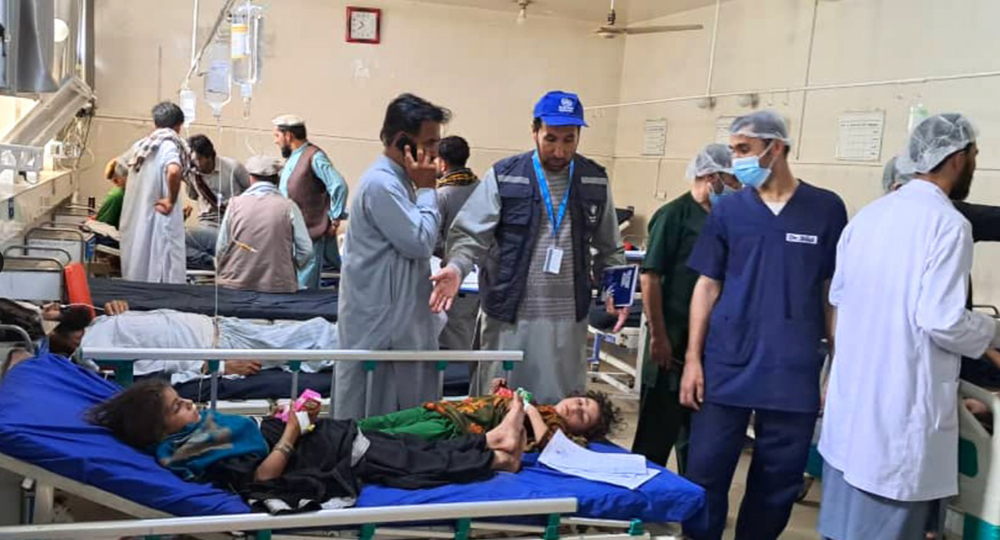 |
Afghans injured after Tuesday night's earthquake. Photo: WHO |
Afghans injured after Tuesday night's earthquake. Photo: WHO
A Nurgal district resident described the scene as the entire village flattened. "Children, the elderly, even young people are buried under the rubble," the resident said. "We need help. Help us get the buried people out. No one can come and retrieve the bodies from this debris."
Afghanistan's Ministry of Defense airlifted 30 doctors and 800 kg of medicine to Kunar to assist overwhelmed local hospitals, according to the state-run Bakhtar news agency.
TOLOnews reported that 35 helicopter flights have transported 335 injured people from Nangarhar airport to Nangarhar Regional Hospital.
Sharafat Zaman, a spokesperson for the Afghan Ministry of Public Health, said the remote, mountainous location of the earthquake means "it will take time to get accurate information about casualties and infrastructure damage."
"The figures for the dead and injured are changing. Medical teams from Kunar, Nangarhar, and Kabul have arrived," he said, adding that many areas have yet to report casualty figures. The agency has launched a large-scale rescue operation, mobilizing hundreds of people to help those in affected areas.
Earthquake-triggered landslides have blocked major roads, severely hampering relief efforts. Military helicopters and rescue teams are working to evacuate the injured and deliver aid.
Al Jazeera's Mohsin Momand, reporting from Kabul, said delivering aid to people in rural areas of Kunar and Nangarhar provinces is proving difficult due to road conditions.
"These roads are unpaved. Most of them are covered with debris from the earthquake, and travel there is very difficult now," Momand said.
Taliban spokesperson Zabihullah Mujahid said in a statement that the earthquake caused "heavy loss of life and property" and appealed to international aid organizations for urgent medical supplies, tents, and rescue equipment.
Afghanistan frequently experiences deadly earthquakes, especially in the Hindu Kush mountain range, where the Indian and Eurasian tectonic plates meet. Chris Elders, a professor of earth sciences at Curtin University in Australia, noted that the steep terrain makes the area prone to landslides after earthquakes.
"Not only do buildings become unstable, but hillsides as well. That's what makes earthquakes here so devastating," Elders said.
In 10/2023, more than 2,000 people died after a 6.3 magnitude earthquake in western Afghanistan, one of the deadliest in recent years.
Binh Minh (According to Sky News, NBC News, Al Jazeera)



